Explore the studio and home of abstract expressionists Lee Krasner and Jackson Pollock
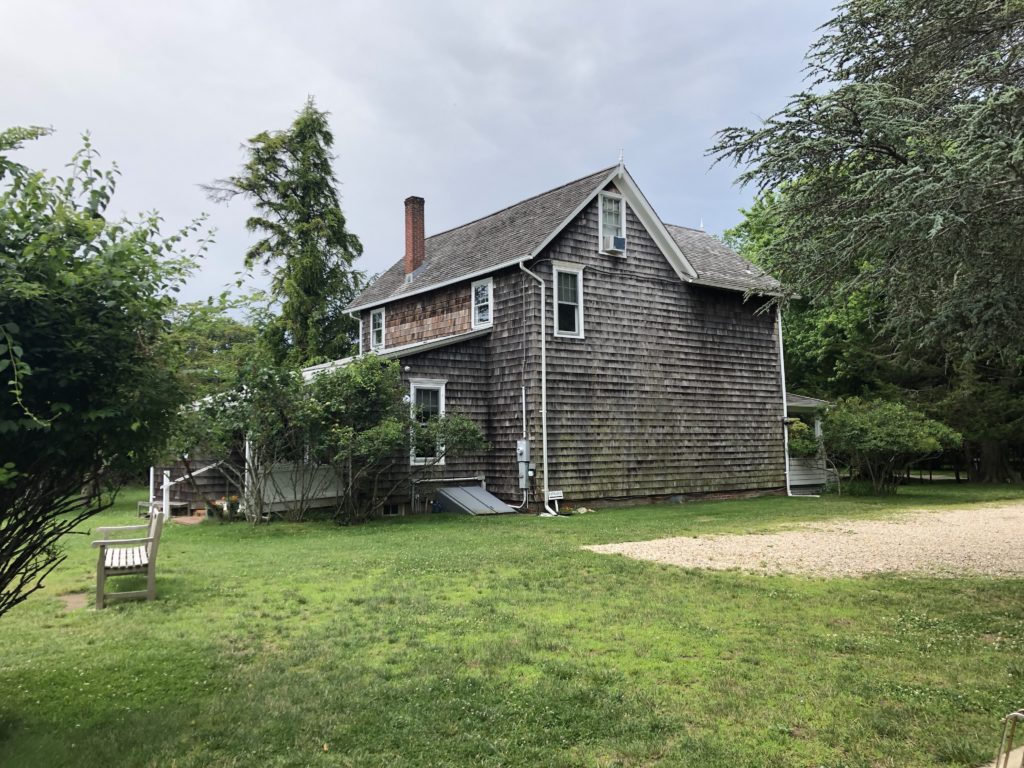
Apple | Spotify | Stitcher | Transcript | Email | Bonus Episode
Listen to the 15-minute bonus episode for the Pollock-Krasner House which takes recordings I couldn’t fit in like the original house layout that Lee regretted changing, the kitchen where Jackson cooked, and the family reaction to the portrayal in the movie Pollock. You can listen by joining Someone Lived Here’s Patreon at any level.
In this episode of the podcast Someone Lived Here, Kendra brings you to the Pollock-Krasner House and Study Center in Springs, NY. A hamlet in the village of East Hampton on Long Island. The property is a farmhouse style originally owned by a fisherman. The two artists, Lee Krasner and Jackson Pollock created much of their most prominent work on this property.
While walking through the property and barn studio you will learn of Lee Krasner and Jackson Pollock’s life, how they navigated their professional and personal relationship, and the physical legacy they have both left on the studio in the barn.
We also learn more of their friends Ted Dragon and Alfonso Ossorio. To read the articles referenced in the episode check out the Easthampton Star article, To Catch a Thief, along with the Rogue article entitled The King of the Creeks.
Thank you to Helen Harrison for showing us around. You can book a tour or learn more about the Pollock-Krasner House and Study Center here.
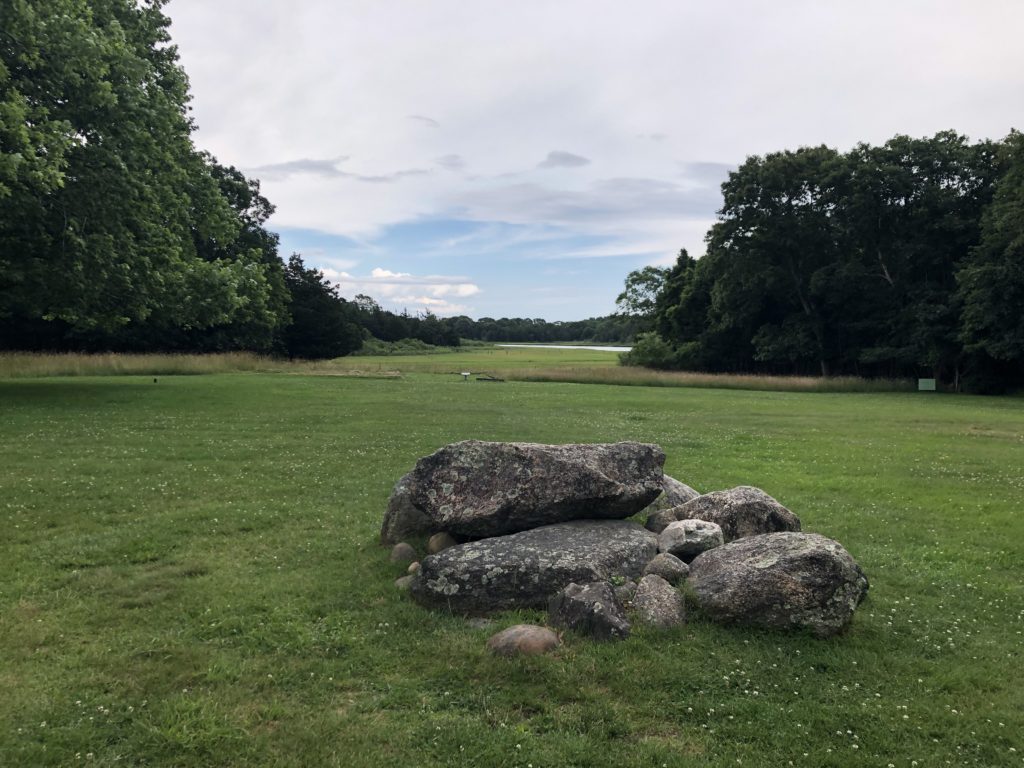
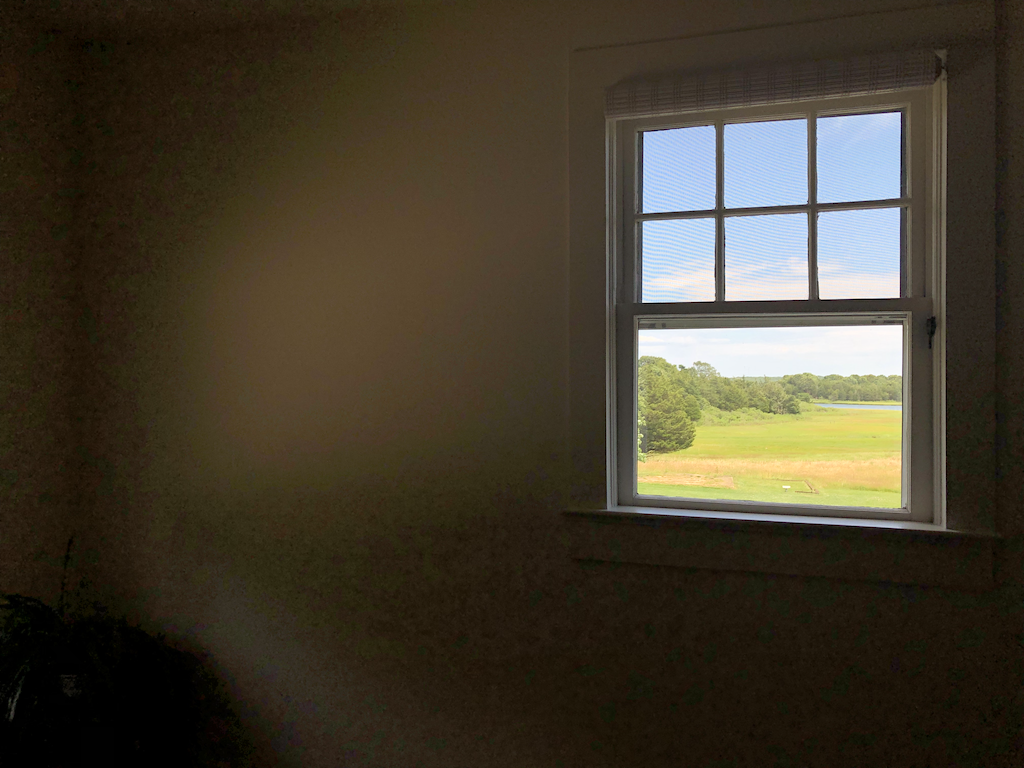
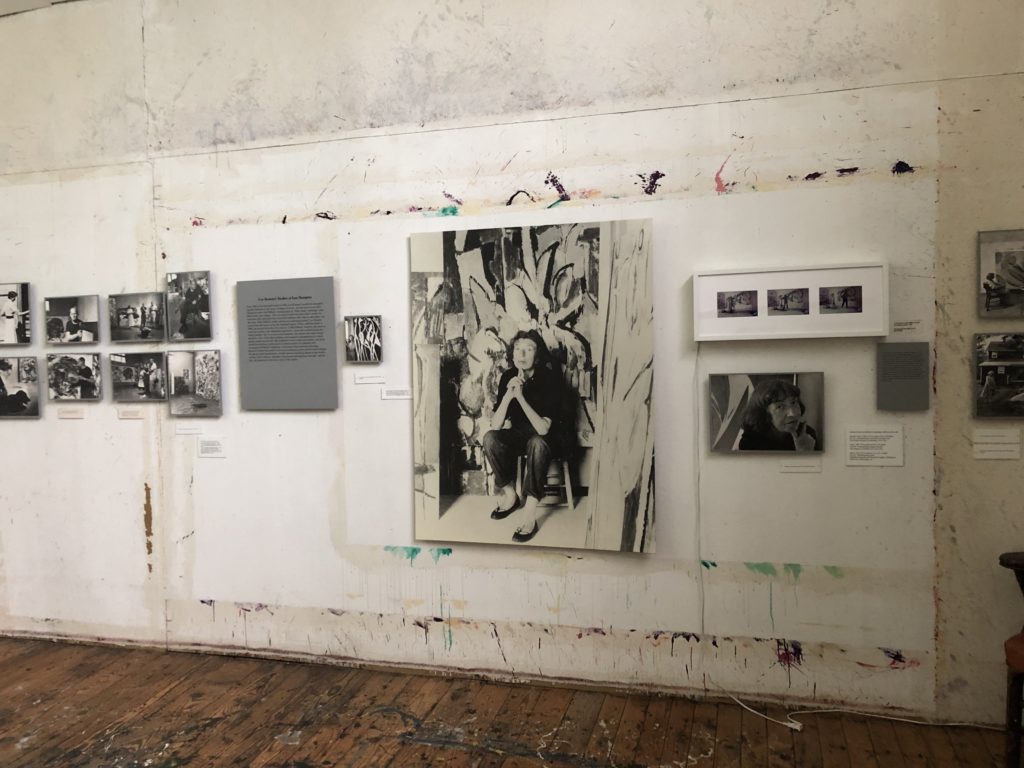
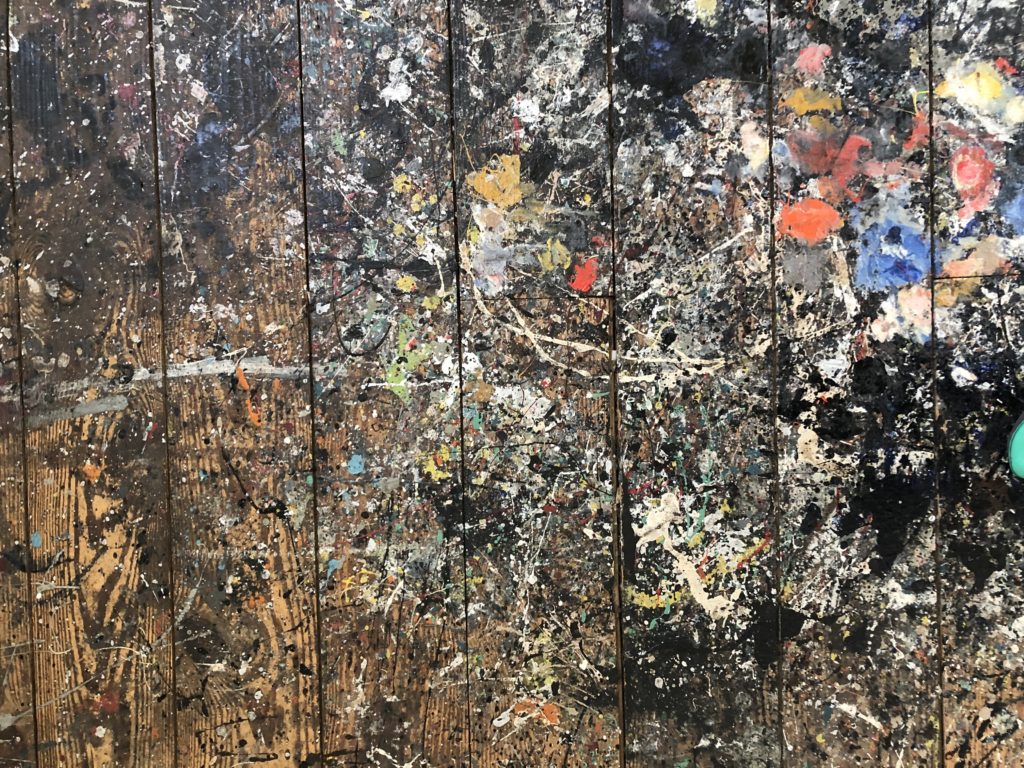
Music by Tim Cahill. Icon artwork by Ben Kirk. Transcription by Sam Fishkind.
Below is a transcript for season 1, episode 4 of Someone Lived Here at the Pollock-Krasner House and Study Center in Springs, NY. If you have any questions about the show or suggestions on how to make it more accessible please reach out at someonelivedhere@gmail.com.
Transcript by Sam Fishkind
Kendra Gaylord: This week, we’re at the Pollock-Krasner house located in Springs, a hamlet in the town of East Hampton on Long Island. The art created at this home and studio can be seen in collections at the MOMA, the Whitney and the MET. Lee Krasner lived in this house for nearly 39 years; 11 of those with her husband, Jackson Pollock, during some of his most productive years painting. Welcome to Someone Lived Here, a podcast about the places cool people called home. I’m your host, Kendra Gaylord. Every other Monday this season we’re bringing you to a cool place in New York and telling the complicated stories of the people who once lived there.
Kendra Gaylord: Today we’re at a wood-frame house right off Fireplace Road on Long Island. The house looks like a farmhouse, and behind it is marsh land and water. It was previously a fisherman’s home, and the barn was used to store nets and equipment. Lee and Jackson removed the front door, which means to get inside, you have to walk around the back. In the middle of the backyard, there’s a pile of stones and off in the distance, the beautiful blue of the Accabonac Creek. To learn more about Lee Krasner and Jackson Pollock and their home, I spoke with Helen Harrison: she’s the director of the Pollock-Krasner House and Study Center.
Helen Harrison: They met because they were in an exhibition together. This friend of theirs, John Graham, was putting together a show of French and American painters; he invited Lee to be in the show, and being very savvy about how the art world worked, she said, “who else is in it?” She wanted to be in good company. And he told her that the French contingent included Matisse, Braque, Picasso; you know, people she’d heard of. And then she said, “well what about the Americans?” And he rattled off a list of names, and there was one name that she didn’t recognize – and that was Jackson Pollock. And John Graham said to her, “well, I’m amazed that you have never heard of him. You don’t know him? He lives one block away from you.” So she literally marched over there; five flights up, and she knocked on the door, and he answered it. And she went into the studio to have a look at his work to make sure that he was worthy of being in a show that she was in. And she said that she was just floored by what she saw. She was amazed that he was doing such imaginative, subjective, emotionally-charged work that she didn’t know about.
Kendra Gaylord: But this actually wasn’t the first time they met. But we’ll get into that a little bit later.
Helen Harrison: She moved in with him and they lived together from 1942 until they married in ’45, and then two weeks later they moved out here. Well, it was not exactly a honeymoon made in heaven; because as she said, there was no heat, no hot water. It was pretty primitive. The house had been vacant for a few years and it didn’t really have the amenities. I mean, even in their tenement and on 8th Street they had a toilet, and they did not have a toilet here, nor did they have any central heating. So, it was a little bit like camping out at first. When they first lived here, they didn’t own it. They were renting. And it was winter, so they had to work in the house. Lee staked out a spot near the chimney where there was the Franklin stove for heat that was downstairs in the back parlor; that was her spot. Jackson moved up into an upstairs bedroom that actually didn’t have any heat except for what went up the staircase. I don’t know how they managed to function, but they actually were both quite productive. He started his Accabonac Creek series, which is named after the body of water behind the house, although they’re not actually landscape paintings – you don’t see the creek and the imagery, but something about the natural environment; maybe the light reflecting off the water…the surroundings kind of infused the work with a more upbeat feeling than what he’d been doing in town. And she started working on a series that she later called her Little Images. They’re almost like mosaics. They have little incremental bits of imagery that are packed together; and they have a kind of glow about them. They’re really amazing – and they both made a kind of breakthrough when they moved out here.
Kendra Gaylord: After convincing Peggy Guggenheim to lend them the down payment, they were able to purchase the home and begin making changes to the space. The barn was moved about a hundred feet from the house and turned into a working studio for Pollock. Krasner moved to Pollock’s previous studio and the extra bedroom upstairs, but it wasn’t just their studios that were able to change.
Helen Harrison: Eventually they made it their own. They made it comfortable; knocked out interior walls and closed up windows and doors on the outside walls to make more of a loft-like environment, where they could hang their artwork and where they could entertain. They were very sociable, and they had a lot of house guests and a lot of people visiting from the city who would then buy or renovate in the area, and pretty soon the Springs really became the art colony rather than East Hampton village.
Kendra Gaylord: Now let’s go back to the first meeting of Lee and Jackson, long before she was in a show with him and saw his studio & work.
Helen Harrison: They met for the first time when they were both on the WPA Federal Art Project, which was a government program during the Depression that gave people jobs for which they were already trained. And if you were an artist, they gave you an art job, and they were both employed on it right from the start. And in around 1936 they were at a dance together, and Lee remembered she had a boyfriend named Igor at the time; and she and Igor were dancing. She was a very good dancer, by the way. And this guy cut in on her, and he was already a little bit tipsy; well, maybe a tipsy, and he stepped all over her feet and propositioned her, and she just basically blew him off. She thought, “you know, who is this guy? Gosh, what a loser.” And five years later when they were in the exhibition together, she met him again and she recognized him. She remembered, “oh, that was the jerk who stepped all over my feet.”
Kendra Gaylord: This wasn’t just a one time; drunken, foot-stepping encounter. Jackson was an alcoholic, and had been since he was a teenager: he would go on extremely destructive binges.
Helen Harrison: People think that he drank in order to work, but it was actually the opposite. He drank instead of working and the more he drank, the less he worked.
Kendra Gaylord: Lee and Jackson were romantic partners, but in their professional relationship they were both able to push each other further in their art.
Helen Harrison: And so she would help him kind of work through some of his doubts and his second guessing himself ,and help him to structure and to focus. And he helped her to loosen up and be more spontaneous. So they really complimented each other in that way. Of course, their private lives were a little more complicated. He was difficult, as she fully admitted right from the start, but she felt she could keep him in line because she believed in him. I think people forget they were in love, and this was a love match. This was not just, you know, something like she felt she could take him on as a project. She really loved him, and he loved her.
Kendra Gaylord: For two years at the house. Jackson was completely sober. He was under the treatment of a local physician who gave him tranquilizers for when he was feeling anxious, and always encouraged him to reach out. Jackson felt this doctor was one of the few people he could trust. That doctor died suddenly after a car accident and the stability in his treatment was gone.
Helen Harrison: So Jackson did not have that person to talk to; to turn to when he fell off the wagon, which was in November, I think November or late October of 1950. And from then, on he was on and off. He was getting treatment and then he wasn’t, and it was just a downhill slide for the next five years, until in 1955, he stopped painting entirely.
Kendra Gaylord: Jackson Pollock died at the age of 44. Before we get into Jackson’s death and the evolution of Lee’s life, I want to walk through the home they both shared: starting in the small upstairs studio that Jackson worked in for under 10 months and Lee worked in for 10 years. The room is at the back of the house and has two windows. One of those windows looks out to Accabonac Creek .
Helen Harrison: Pollock’s first series in this room was called the Accabonac Creek Series. They are not landscape paintings, but they do have a kind of…I guess it’s more expansive compositions and brighter, more upbeat colors than what he was using in the city.
Kendra Gaylord: One other description of the room that doesn’t seem important now; but will later, is the floorboards. The floor is painted totally white and made up of Masonite wood boards that are about two feet square. Sandy McCoy was a commercial printer, and had printed a board game called “Autograph Baseball Game”. He finished up and had a lot left over, and gave them to his brother, Jackson Pollock. In 1953, Lee and Jackson covered not just the upstairs studio, but the entire upstairs and the barn studio with these boards painted white. We’ll get into why that’s so important in a minute. In this upstairs studio, Lee continued her Little Image series, the title of which underestimates their size and presence.
Helen Harrison: They were both able to do seven foot canvases in here.
Kendra Gaylord: She also created her collage images in the studio. She was highly critical of her work from the early 50’s. She ripped much of it into pieces and placed these remnants in new works. My favorite of these pieces is entitled “Milkweed” from 1955. Being in the room, it feels like the natural elements in her view might have crept into her work. Before we head downstairs. We’re going to walk through the rest of the upstairs rooms.
Helen Harrison: The guestroom contains their twin beds. They had very different schedules, and she got up in the morning and kind of went into the studio and worked for a few hours, then Pollock would get up late; he would nurse a cup of coffee, and then she would go back into the studio and he’d go out to his studio. But she didn’t like to disturb him in the morning, so they had twin beds; and she put them into the guest room when he died, and then she got a double bed for herself.
Kendra Gaylord: When walking through the upstairs. I think it’s important to remember that Lee lived in this home alone for almost 30 years. You can especially feel this in the master bedroom.
Helen Harrison: And she was a shell collector, so we’ve got some of her shell knickknacks here and shells under the window. These are all things that she put in after she was living here on her own. The wicker and rattan furniture also came in in the 60’s; and there’s her spider plant.
Kendra Gaylord: Spider plants are famous for how quickly they multiply. The house actually sells the grandchildren of Lee’s spider plant. I know this because I purchased one. Please reach out if you’re interested in a great-grandchild of Lee’s infamous spider plant. That’s pretty much everything on the second floor, other than the bathroom. You rarely get to see bathrooms in historic homes, so I can finally confirm that famous artists have toilets too. Heading back downstairs, the first thing you notice is a very big, very cool dining room table.
Helen Harrison: Now, when Jackson and Lee first lived here, they had very little furniture. Some of their friends gave them some things when they moved in, but after his death, she bought a beautiful dining table that was made in London in the mid-19th century.
Kendra Gaylord: It’s a circular table that can be best described as a contraption. It’s eight feet across, but if you take out the straight leaves, it can be cranked to be a six foot table. Lee and Jackson hosted, but she continued after his death. She knew this was the best way to keep the curators and critics interested in Pollock’s work as well as her own.
Helen Harrison: Well, much of the later furniture she bought with her friend Ted Dragon (who was Alfonso Ossorio’s lover). And they lived in Wainscott in a house called The Creeks. They had met in the city and came out here – Jackson and Lee actually scouted that house for them. And one of the things that she liked to do with Ted Dragon was to go antiquing.
Kendra Gaylord: I am so excited to tell you about Ted Dragon and his extreme passion for antiques. As Helen mentioned, he was the lifelong partner of Alfonso Ossorio, who was also an abstract expressionist, and the son of a sugar baron from the Philippines. Ted Dragon was a dancer with the Paris Opera and the New York City Ballet. The two met at Tanglewood in Western Massachusetts in 1951 Ossorio purchased a 40-room villa in East Hampton called The Creeks. The home became a hub for social and artistic activity, and Ted Dragon was the master of ceremonies.
Speaker 4: [Musical Interlude]
Kendra Gaylord: From 1957 to 1959, 30 estates were robbed. No cash or jewelry was taken. Just museum quality pieces in okay condition. The robber was caught in January of 1959 – and it was Ted Dragon. He would later tell the author, Steven Gaines, “I just love beautiful things so much, and sometimes I was appalled at how badly the furniture was being kept.” He borrowed books from the library on furniture restoration. Some items he repaired, others, he reupholstered. It was rumored that when people got their antiques back, they thanked him. After getting caught, Ossorio posted his bail and got lawyers. Ted Dragon received a suspended sentence and spent two years at a sanatorium in Connecticut. Dragon then returned to his home with Ossorio, and would later say that the incident cemented their relationship. Ossorio passed away in 1990; after 42 years together., he left the property to Dragon. The writer Steven Gaines wrote, “they had a very special thing going. You have to be really lucky to find that in your lifetime.” If you want to read more about Alfonso Ossorio and Ted Dragon, I would highly recommend a story in the East Hampton Star magazine; along with a piece in Rogue Philippines entitled “The King of The Creeks.” Now we’re going to go back to the story of Jackson Pollock and Lee Krasner and find out what happened in their relationship, and how Jackson died. As Helen mentioned, Jackson had returned to alcohol and had stopped creating work in 1955. He would go to New York City regularly.
Helen Harrison: He would go in on a weekly basis for his psychiatric treatment and stay over at the Hotel Earl, or maybe with his brother; you know just to hang out at the Cedar Bar and hold court.
Kendra Gaylord: It was there he met Ruth Kligman.
Helen Harrison: He had started having an affair with her in the spring of ’56. Lee found out about it. They were supposed to be going to Europe that summer together; he and Lee, and he decided to stay home. She decided to go because she needed time to think about how she was going to handle this situation. So no sooner did she leave in mid-July, then he moved Ruth into the house here, and lived with her off and on. It wasn’t a continuous thing because she was having second thoughts. And she went back into the city for a few days, and invited a friend to come out and spend the weekend. My personal opinion is that she may have felt a bit lonely, because Jackson’s friends were not sympathetic. If they went to a party together, she got snubbed, and Lee’s friends of course were openly hostile. So she asked her friend Edith Metzger to come out and spend the weekend, and they came out on the train, Jackson picked them up, and he was already drinking in the morning when the train came in. So the day kind of went downhill from there. They were invited to a concert in the evening and they got in the car. It was a big Oldsmobile 88 convertible; powerful car, and they drove down Fireplace Road to go to the concert in Wainscott, and he fell asleep at the wheel. So, maybe going to the concert wasn’t such good idea. They turned around and came back up Fireplace Road, and he stepped on the gas for no good reason. He was only coming home; there was no rush, but for some reason, he decided to speed, and he lost control of the car on a curve, went off into the woods, and the car flipped over. It threw him out and he hit a tree with his body; his upper body and chest were injured, and it killed him. The car rolled over on Edith – he didn’t even know her; she was a perfect stranger, and it killed her. Ruth was thrown clear, and she survived to write a book about it.
Kendra Gaylord: Her book entitled “Love Affair” includes the last photo of Jackson, taken by Edith. Ruth sits on Jackson’s lap while he sits on the pile of stones in the backyard. Lee was in Paris at the time of the accident.
Helen Harrison: And she gets the call the next morning. She has to fly back and take care of the situation. And it was just devastating for her. She was absolutely crushed, and took her a long time to get over it because she felt guilty about having left him and he self-destructed within a month. At the time of Pollock’s death, she was working on a series of grotesques figures. She had what she called “breaks”. She would go off and do something completely different, so from one year to the next it might almost look like two different artists. It was kind of not good for the career in a way, because it was too abrupt. It wasn’t a gradual transition. But at the time of his death she was somehow exploring these rather…almost foreboding, ominous forms that are part human, part plant. They’re very strange. And after that series, after his death, her vision just opened up in the most extraordinary way. She started doing – they were still voluptuous forms – but they were so upbeat, very bright and colorful and plant-based; animal-based shapes that are lively and happy. She called them her “Happy Pictures” and she was miserable. She was in mourning; and that she was able to bring these things forth, it’s just unbelievable to me, remarkable in so many ways. In fact, one of her friends said to me that he considered them to be “antidotes to her grief”. The masterpiece of that series is in the Whitney. It’s called “The Seasons.” It’s a big one. I think it’s about 16 feet wide, and that she did in the barn studio, because she would never have had enough room for it up in the little bedroom. But the fact that she was able the very next year to make that space her own; any ghosts that were in there were gone, and she was able to make her her turnaround statement in such a positive way is really incredible.
Kendra Gaylord: We’re now going to see the studio that was the work space to two renowned abstract expressionists. On the way out to the studio. Helen and I pass the pile of stones. She explains why they’re here.
Helen Harrison: All peppered around the property are pieces of granite that are called “glacial erratics”. They were left here after the last Ice Age when the glacier retreated. It didn’t take them with it, and they are just found locally quite commonly. Jackson loved them, and he had a friend with a bulldozer, so he had the friend come and dig up a bunch of them and pile them on the back lawn as a kind of sculptural construction.
Kendra Gaylord: After he died, Lee had one of these stones brought to his grave site as his gravestone, but she never felt it was big enough to represent him.
Helen Harrison: So she asked her friends to be on the lookout for a better rock, and they found a much bigger; much more imposing stone, which they eventually put over there. And that became his tombstone.
Kendra Gaylord: The smaller stone, which was previously his, stayed nearby until Lee’s death, when it was moved and made to be her gravestone. We’re now entering the studio, and I wanted to understand how Lee saw her work, and how she saw Jackson’s – and how those dynamics of gender may have been at play.
Helen Harrison: Well, from the point of view of the market, they certainly were. I mean female artists simply did not get the kind of promotion that male artists did. It just didn’t happen. Because after the WPA went away, when they had gender parity, they were paid the same. It had nothing to do with whether they were male or female. So they kind of had expectations that were dashed after the war, when the art market kicked in and the dealers didn’t want to take risks with female artists. So they got pushed to the side -not that they didn’t still have careers, they did, but they didn’t get the kind of promotion that the male artists got.
Kendra Gaylord: But there’s one thing that is really evident: from the moment Lee met Jackson, not on the dance floor, but in his studio, she knew he had something special.
Helen Harrison: His career was her priority while he was alive. So she did not have gallery representation. She exhibited, she continued to paint and show her work, but she had no representation. So she was not visible professionally the way he was. And by the time of his death, he was already very well-,known and she made it her mission to see to it that that that prevailed. Not that she didn’t push herself as well. She did, but Pollock was the innovator. Pollock was number one and she accepted that. So the fact that she was less well-known and and less highly-regarded than he was, was not a conflict for her. Now, she wanted to have recognition, of course. She wanted to sell her work, she wanted to be taken seriously, and she was – but not as seriously as he was taken. And that was sort of a given.
Kendra Gaylord: We’re standing in the center of the studio now. Remember how I mentioned those baseball boards that Jackson and Lee used to cover the floors in 1953? Those stayed in place until 1988 when the former director noticed that the floorboard she was seeing in a photo didn’t match the white square she was seeing in real life.
Helen Harrison: So Meg went to the middle of the room and she pried up one of the floorboards and she saw what was underneath. So, she called New York conservation associates who came in, took up each floor board very methodically, peeled back the tar paper that underneath and revealed what we have!
Kendra Gaylord: What they have is a 20 square foot barn with the stray paint of Jackson Pollock’s work covering the floor and the gestures of Lee Krasner’s work on the white walls.
Helen Harrison: You know, you look up on the wall and you can see there’s where “Gaea” was; you look down on the floor here and you can see where “Convergence” was, where “Blue Poles” was…
Kendra Gaylord: What didn’t end up on the canvas stayed in this room. Both Jackson and Lee always required an invitation to enter each other’s studios, and now they both live on within the same space: partners and so many facets of their lives.
Kendra Gaylord: The Pollock-Krasner House and study center is open Thursday through Saturday, but requires reservation during the week. You can get more information at pkhouse.org.
Kendra Gaylord: Thank you for listening to “Someone Lived Here”. I’m your host, Kendra Gaylord. Be sure to subscribe so you can be the first to hear the next episode on Lyndhurst Mansion in Tarrytown, NY, and the two sisters who loved it enough to keep it standing. Thank you to Helen Harrison at the Pollock-Krasner House and Study Center. To see more photos from the Pollock-Krasner House, check out our episode page at someonelivedhere.com, or our Instagram @SomeoneLivedHerePod. Music is by Tim Cahill, and podcast artwork is from Ben Kirk. If you have any notes or recommendations for the show, send us an email: someonelivedhere@gmail.com.